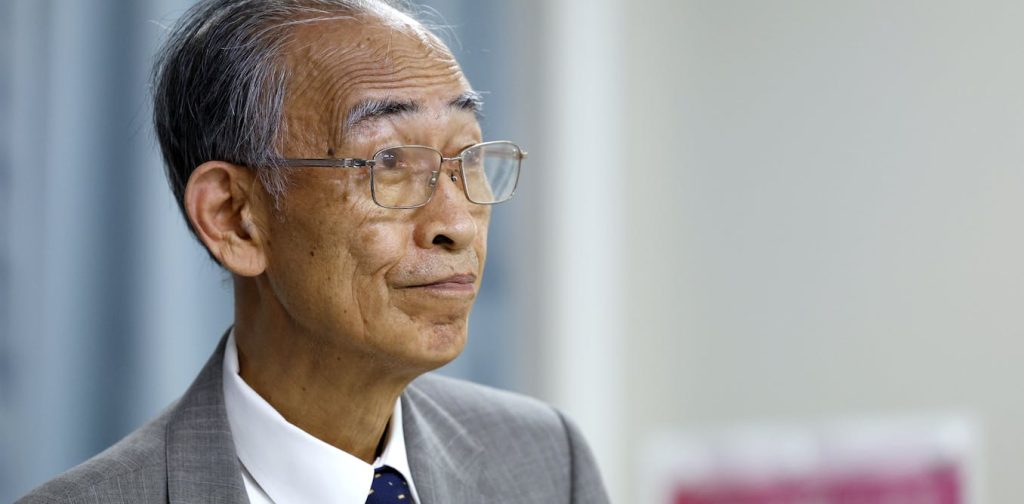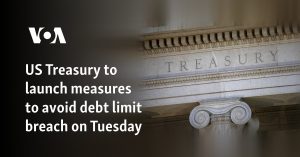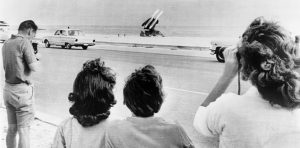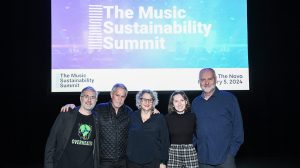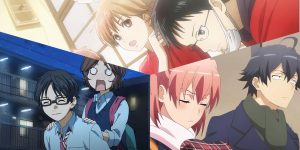The 2024 Nobel peace prize has been awarded to Nihon Hidankyo, a Japanese grassroots organisation created by survivors of the US atomic bombings of Hiroshima and Nagasaki in 1945. Nihon Hidankyo has provided thousands of witness accounts and public appeals by survivors, who are known as hibakusha, and has sent annual delegations to the UN.
Their work was commended by the Nobel committee, who decided to award the prize to Nihon Hidankyo “for its efforts to achieve a world free of nuclear weapons and for demonstrating that nuclear weapons must never be used again”.
Nihon Hidankyo’s co-chair, Toshiyuki Mimaki, said: “I never expected we would win the Nobel peace prize. Now we want to go further and appeal to the world to achieve lasting peace. We are old, but we never give up.”
There are an estimated 106,000 hibakusha still living in Japan, with many more alive around the world. There are also survivors – and their descendants – of the more than 2,000 nuclear tests that have taken place worldwide since 1945. Some of these people use the term hibakusha to describe themselves.

Elizabeth Chappell, Author provided (no reuse)
This was not the first time the prize had been awarded to a nominee for their efforts towards nuclear disarmament. And it probably won’t be the last.
In 1985, the prize was awarded to an organisation called the International Physicians for the Prevention of Nuclear War. And then, in 1995, the prize was won by Joseph Rotblat, the only scientist to have left the Manhattan Project – the US government’s research project to produce the first atomic bomb – on moral grounds.
Barack Obama was next in 2009, for his “vision of and work for a world without nuclear weapons”. His administration made efforts to renew the strategic arms reduction treaty with Russia, and Obama became the first US president to visit one of the atomic bombed cities when he made a special trip to Hiroshima in 2016.
The following year, the prize was won by the International Campaign to Abolish Nuclear Weapons (ICAN) for its “groundbreaking efforts to achieve a treaty-based prohibition of nuclear weapons”. This was a reference to the UN treaty on the prohibition of nuclear weapons, which from 2017 has outlawed states from participating in any nuclear weapon activities.
Nihon Hidankyo may not be a household name, but two of its former co-chairs are quite well known internationally. Hiroshima-born Sunao Tsuboi was photographed in one of the few known images to be taken on the day of the bombing.

Jeremy Sutton-Hibbert / Alamy
Tsuboi and fellow survivor Shigeaki Mori also spoke with Obama on his visit to the city. It is said that Obama’s visit was, in part, triggered by Mori’s research. He had spent 40 years searching for the identities of 12 US prisoners of war who had been killed in the bombing of Hiroshima.
Another of Nihon Hidankyo’s former co-chairs, Nagasaki-born Sumiteru Taniguchi, spent three-and-a-half years in hospital after the bombing of his city and never fully recovered from his wounds.
Taniguchi’s story became famous after the publication of his 1984 memoir, The Postman of Nagasaki. The book’s author, Peter Townsend, was a Royal Air Force pilot in the second world war and is known in the UK for his affair with Princess Margaret, sister of the late Queen. The memoir was made into a film in 2022.
The logic of nuclear deterrence
We are currently at a time where the threat of nuclear weapons is growing. This was reflected by the committee who, when awarding Nihon Hidankyo with the prize, noted that the “taboo” against their use was “under pressure”.
Nuclear deterrence relies on the logic of the threat to inflict “unacceptable damage” on the enemy. But nuclear deterrence is not foolproof. What is unacceptable to one adversary may be acceptable to another, depending on the circumstances.
It’s worth remembering that the 1945 atomic bombings were not, as is commonly believed, the only reason the Japanese surrendered the following week and brought the war to an end. Various factions in the war council had been attempting to find ways to surrender for over a year, and the bombs offered Japan’s Emperor Hirohito a way to save face.
As M.G. Sheftall, the author of the 2024 book, Hiroshima: The Last Witnesses, has noted:
The bombs didn’t force the Japanese to surrender, they gave Hirohito the opportunity to surrender … News of the Nagasaki bomb came as they were having a meeting of the imperial war council about what to do about the Soviets coming into the war. It should be known that there was never any special imperial war council meeting after the Hiroshima bomb. That wasn’t considered weighty enough to make everyone drop what they were doing and head to the Imperial Palace.
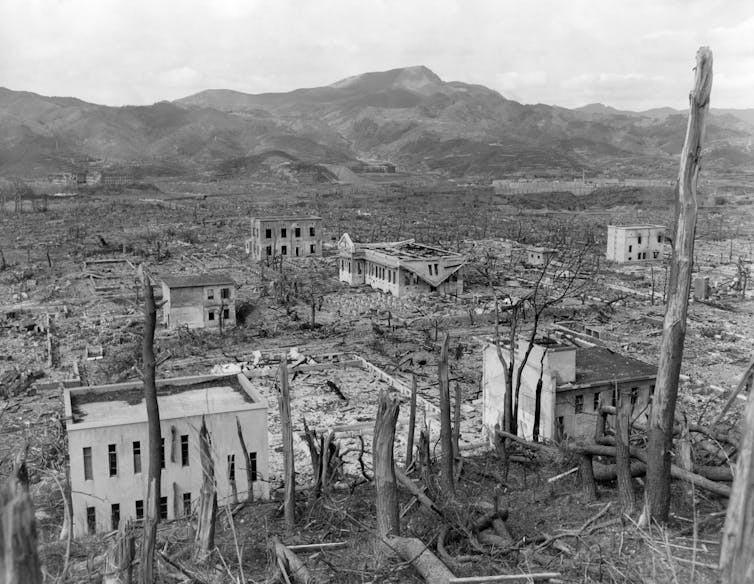
Everett Collection / Shutterstock
The effects of radiation on the human body were little known in 1945, due to censorship both by the Japanese military and the US occupation that followed. As I was told in an interview with a hibakusha called Keiko Ogura, who was eight when the first bomb was dropped: “No one understood why people were still dying days, weeks, months and years after the attacks – they thought the atomic bomb was poison gas.”
We now know much more about the devastating consequences of radiation for humans, animals and the environment across generations. However, research is still not widely publicised, with ICAN taking the lead as an international forum for important new findings to be shared and known.
Let’s hope this year’s award will help inform the world once and for all of the nature of these weapons. As former US president, John F. Kennedy, said in a speech to the UN in 1961: “A nuclear disaster, spread by wind and water and fear, could well engulf the great and the small, the rich and the poor, the committed and the uncommitted alike.”
Next year will mark the 80th anniversary of the atomic bombings. This prize should help ban what Kennedy described as the “sword of Damocles” that still threatens life on earth.
